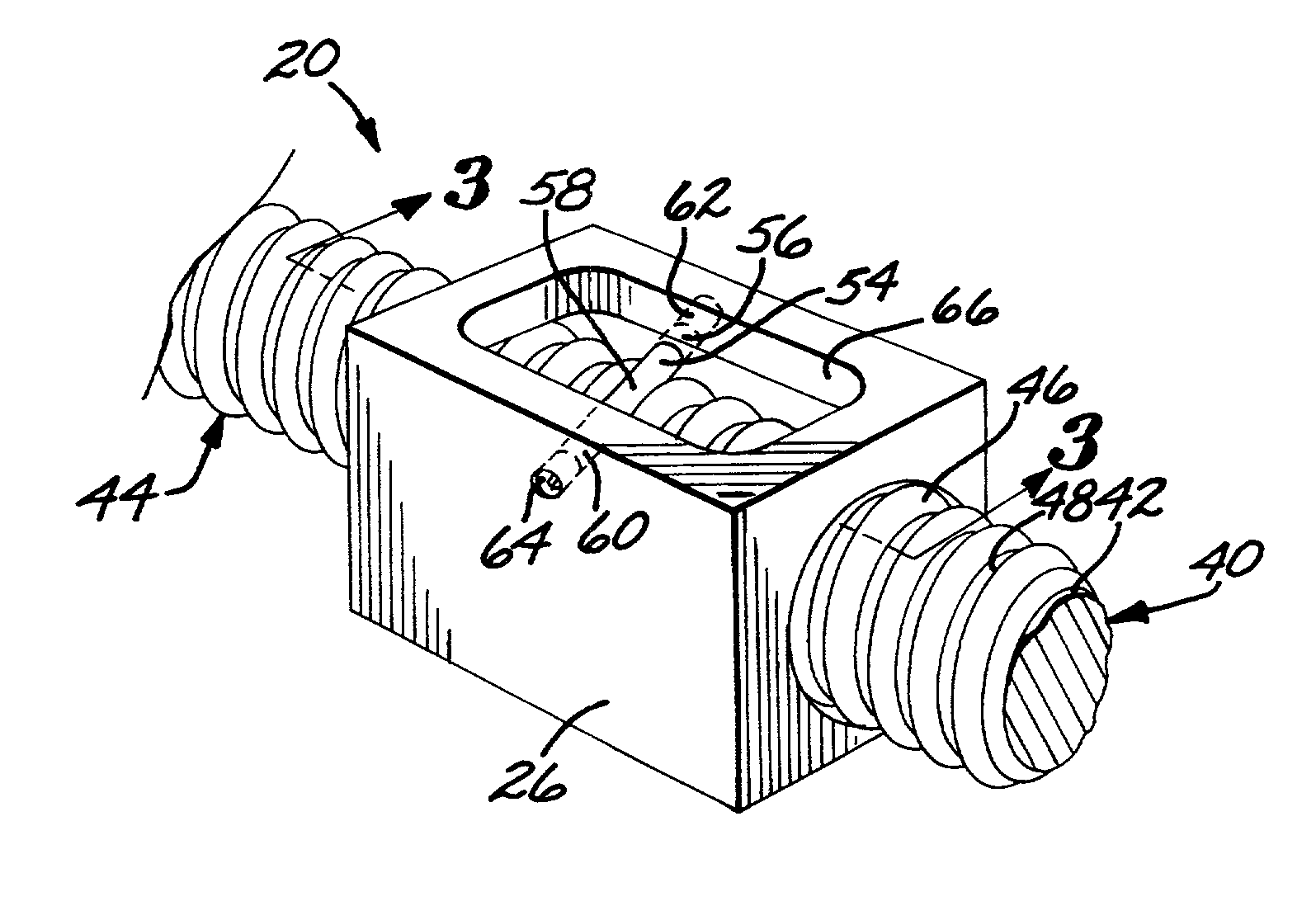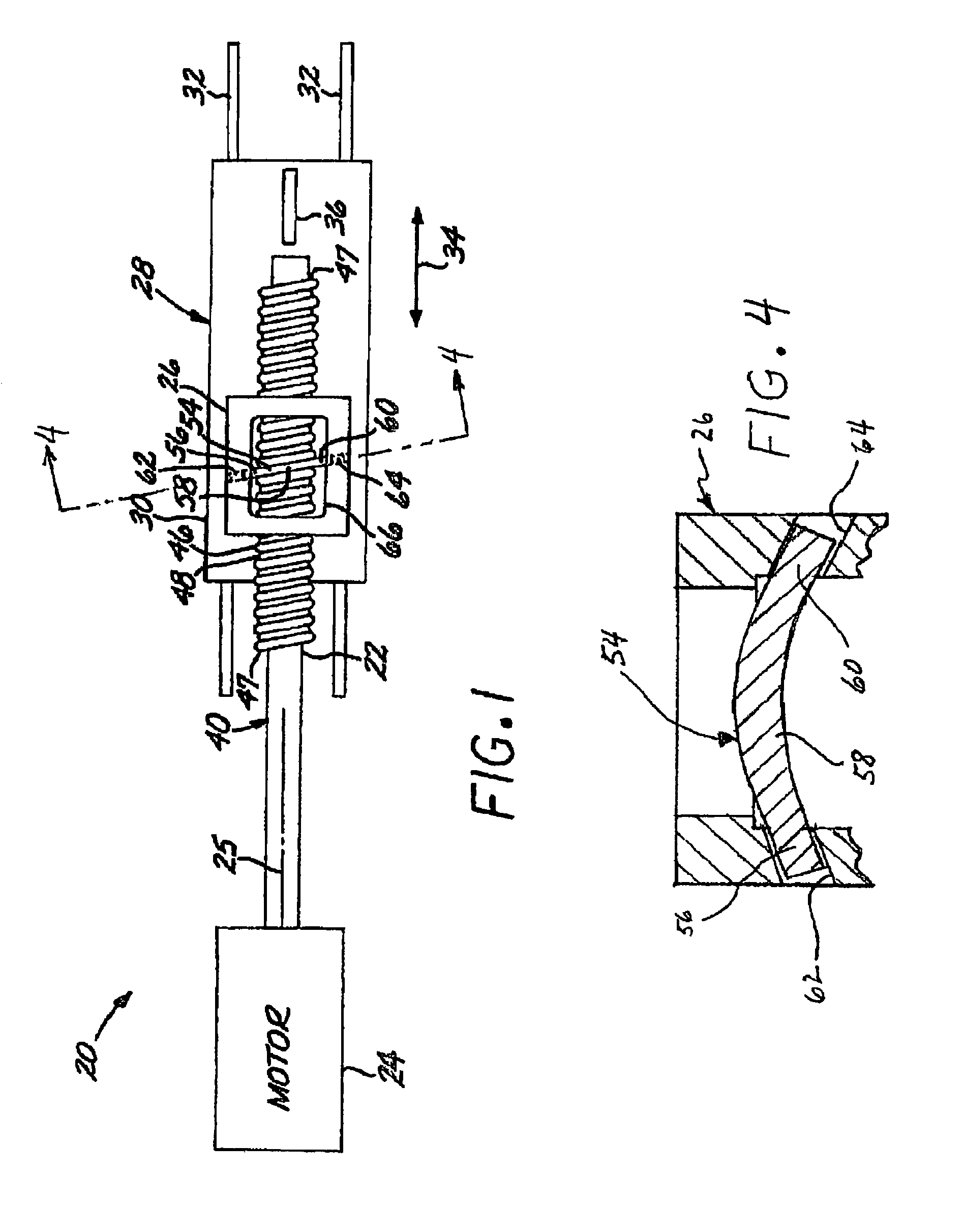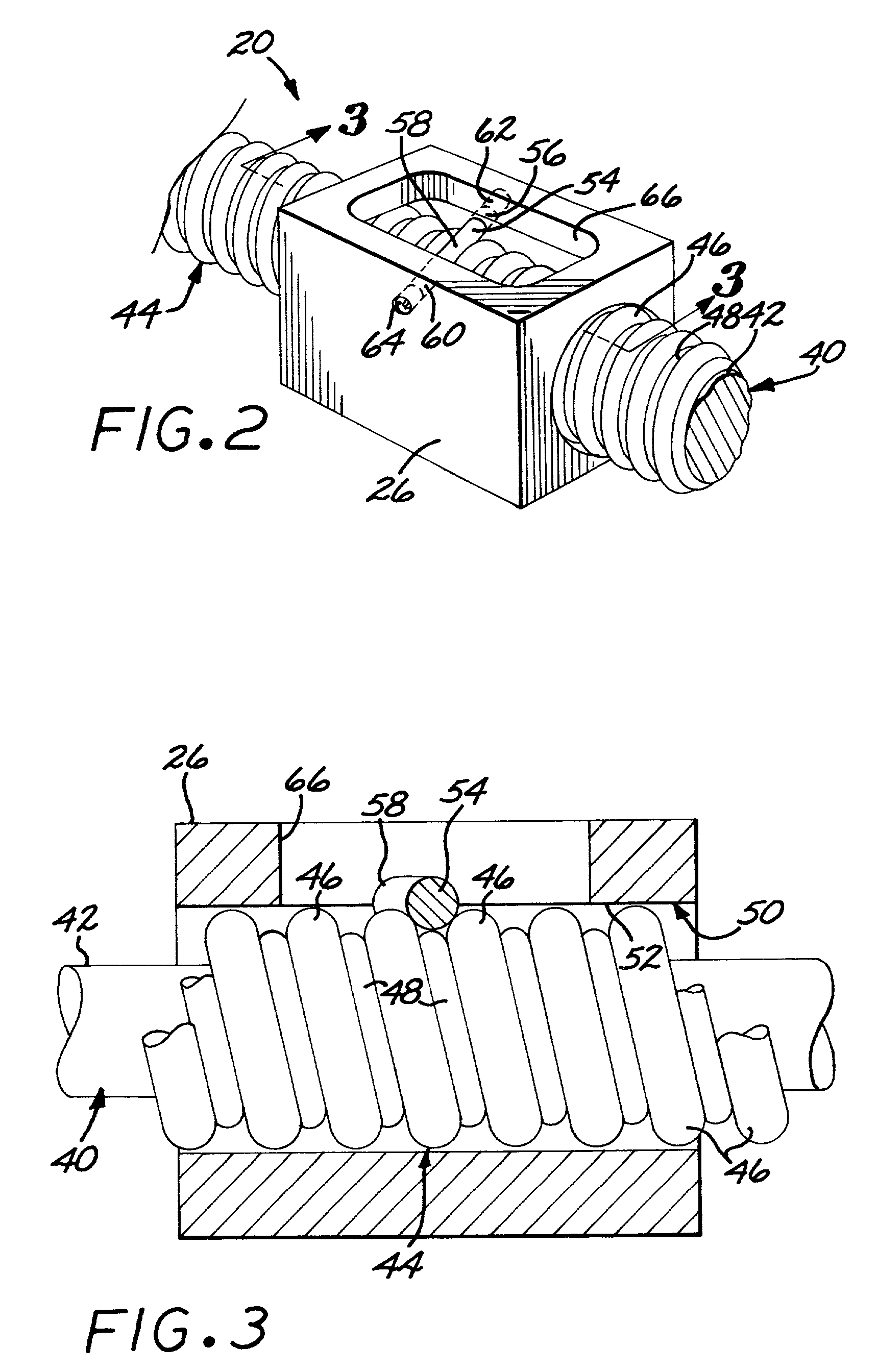Leadscrew assembly with a wire-wound leadscrew and a spring-pin engagement of a drive nut to the leadscrew
a technology of leadscrew and wire-wound, which is applied in the direction of gearing, gearing elements, hoisting equipment, etc., can solve the problems of excessive thread wear of the conventional leadscrew assembly, limited to relatively large-size devices and coarse thread pitches, and relatively expensive production of conventional leadscrew assemblies. , to achieve the effect of avoiding backlash and being inexpensive to produ
- Summary
- Abstract
- Description
- Claims
- Application Information
AI Technical Summary
Benefits of technology
Problems solved by technology
Method used
Image
Examples
Embodiment Construction
[0017]FIG. 1 depicts a leadscrew assembly 20 including a leadscrew 22 driven by a motor 24, such as a miniature stepper motor, having a rotational power output about a rotational axis 25. The leadscrew 22 engages a hollow drive nut housing 26 that is affixed to a linear slide mechanism 28 so that the drive nut housing 26 does not rotate. The linear slide mechanism 28 includes a slider 30 mounted on rails 32 to move linearly parallel to a linear movement direction 34. A supported object, in the illustrated case an optical filter 36, is supported on the slider 30. Rotary motion of the power output of the motor 24 introduced into the leadscrew 22 is thereby translated into a linear movement of the optical filter 36 parallel to the linear movement direction 34.
[0018]FIGS. 2-3 illustrates the leadscrew 22 and drive nut housing 26 in greater detail. The leadscrew 22 comprises an elongated shaft 40 having an outer lateral surface 42 and the rotational axis 25. The shaft 40 is preferably cy...
PUM
 Login to View More
Login to View More Abstract
Description
Claims
Application Information
 Login to View More
Login to View More - R&D
- Intellectual Property
- Life Sciences
- Materials
- Tech Scout
- Unparalleled Data Quality
- Higher Quality Content
- 60% Fewer Hallucinations
Browse by: Latest US Patents, China's latest patents, Technical Efficacy Thesaurus, Application Domain, Technology Topic, Popular Technical Reports.
© 2025 PatSnap. All rights reserved.Legal|Privacy policy|Modern Slavery Act Transparency Statement|Sitemap|About US| Contact US: help@patsnap.com



